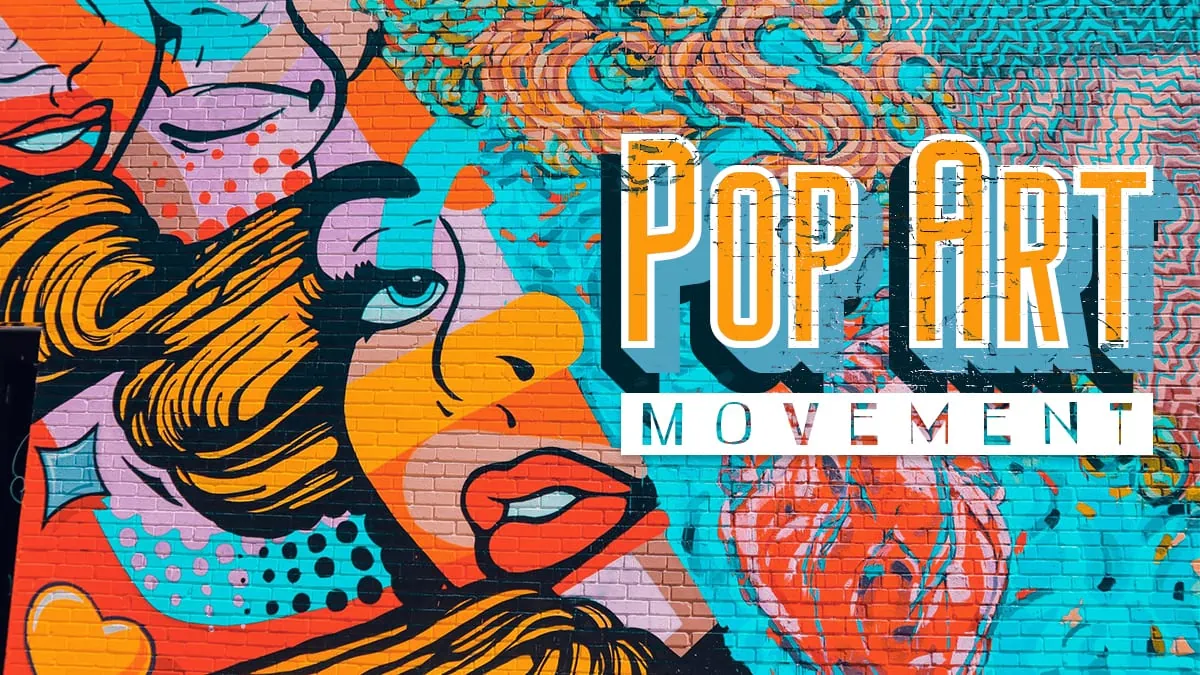Many of us know artists like Roy Lichtenstein, Andy Warhol, or Jasper Johns, but have you ever wondered what Pop Art movement is really about?
Pop art developed as an art movement in America and Britain, in 1950, and peaked in the 1960s.
This movement was the brainchild of several young revolutionary artists.
One can define Pop Art as a movement that was influenced by popular and commercial culture from the western world.
Pop artists were of the opinion that the art displayed in museums or taught in schools in those days did not represent the real world.
So instead, these Pop artists resorted to contemporary mass culture for inspiration.
Their aim was to elevate the more banal parts of popular culture and bring forth art that everyone could relate to.
Keep reading to learn more about the history of pop art and why the style became one of the most well-known forms of Modern Art today.
Table of contents
- Beginning Of Pop Art
- Pop Art Characteristics
- Pop Art in Great Britain: The Independent Group
- The Emergence of Neo-Dada
- Pop Art: Concepts, Styles, and Trends
- Eduardo Paolozzi and Richard Hamilton: The Tabular Image
- Pulp Culture: Roy Lichtenstein
- The Monumental Image: James Rosenquist
- Repetition: Andy Warhol and Repetition
- Pop Sculpture: Claes Oldenburg
- Pop Art in Los Angeles
- French Nouveau Réalisme
- Pop Art’s Influence on The 21st Century
- FAQs
Beginning Of Pop Art

It started as a rebellion against traditional forms of art and as a reaction to contemporary art standards.
The movement also stood against the mystical vocabulary of abstract art.
There were some conflicts surrounding the original birthplace of pop art.
But when we look into pop art history, we see that the movement first arrived in Great Britain, which endured a great economic crisis after the war.
It was ignited by British art critic, Lawrence Alloway, in 1958 with his article “The Arts and Mass Media.
”The pop-art era gained momentum as pop art artists began to use idealized images of the American lifestyle in popular magazines as a satirical commentary on British society.
Pop Art Characteristics
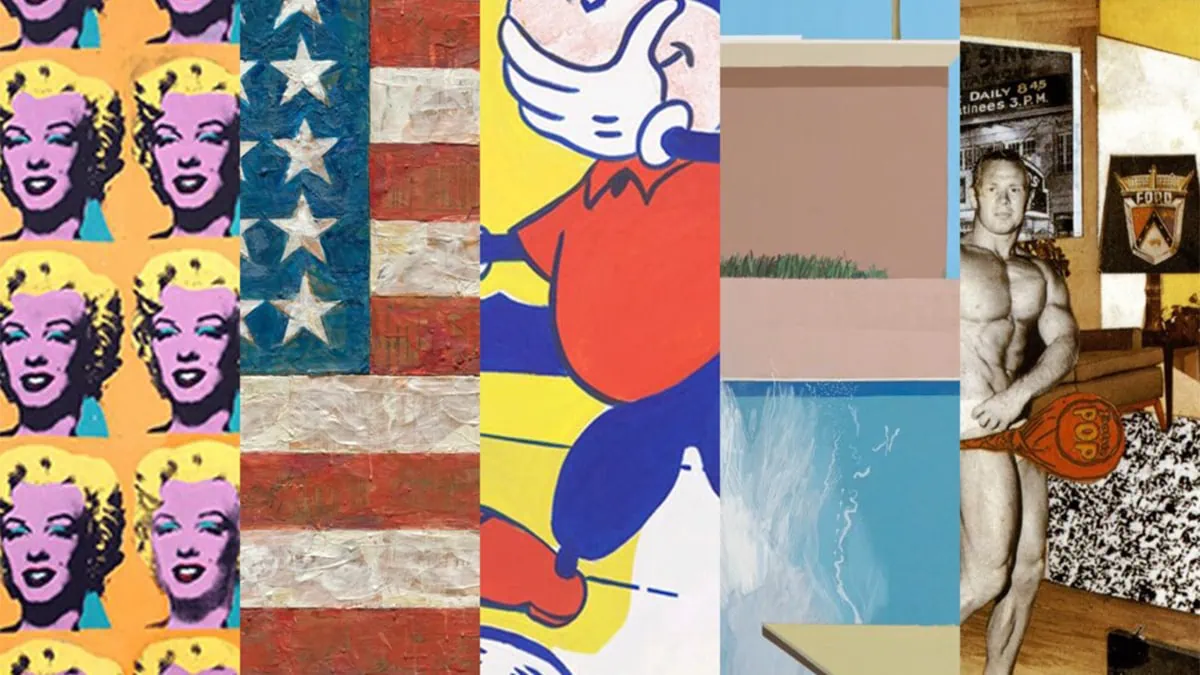
The Pop art movement challenged fine art traditions by using iconography from popular and mass cultures, such as advertising, comic comics, and mass-produced cultural artifacts.
One of its goals was to incorporate familiar imagery (rather than elite culture) in art, stressing any culture’s prosaic or kitschy aspects, most often through sarcasm.
Below are some key characteristics the were born out of the Pop Art Movement:
- Known imagery: Pop artists would use imagery from popular commercials, media, and goods in their artworks. Some common commercial products used for graphic imagery consisted of photos of celebrities, body parts, and common objects such as soup cans, water bottles, mobile phones, cigarettes, road signs, etc.
- Vivid colors: Bold, brilliant, and saturated colors are common in pop art. Pop art immediately captures the audience’s attention by embracing bright colors and strong outlines.
- Sarcasm and satire: They were the most prominent features of pop art. Pop artists would use wit and sarcasm to convey a message about current events.
- Ingenious techniques: Most of the artists in Pop Art would use printing technologies to promptly recreate pictures in huge quantities. One such example is the silkscreen printing method that was adopted by Andy Warhol. The ink is transferred onto paper or canvas using a mesh screen with a stencil.
- Mixed media: Famous Pop artists would frequently use a range of materials and mediums in their work. Robert Rauschenberg, Richard Hamilton, and Peter Blake were some pop artists who employed collage in their work. It was a new whole combination of photographs, newspaper prints, and paper cut-outs onto a single canvas. Artists used satire in their pop art paintings to question American culture’s rising materialism and industrialism.
Pop Art in Great Britain: The Independent Group

Around 1952, a group of artists called themselves the Independent Group consisted of many young painters, sculptors, writers, architects, and critics.
They started frequently meeting to talk about topics like mass culture’s place in fine art, the found object, and science and technology.
Later, they also came to be recognized as the precursors to the new Pop movement.
Some of the illustrious members included Eduardo Paolozzi, Richard Hamilton, architects Alison and Peter Smithson, and critics Lawrence Alloway and Reyner Banham.
At the time when this group was created, Britain was still recovering from the gravity of the post-war years.
It was a pop art period when the citizens of England and the Independent Group would have mixed feelings about American popular culture. `
The rich world of pop culture seemed to promise for the future—- of Western movies, science fiction, comic books, billboards, automobile design, and rock and roll music.
The Independent Group played a pivotal role in creating the “found object” aesthetic and also introduced mass culture while re-evaluating modernism.
The art they produced, like collages, abstract sculptures, or even architecture, was translative of the cultural shift.
Recommended Read: American Gothic Painting
The Emergence of Neo-Dada

Close to the mid-1950, artists working in New York City passed a crucial juncture in modern art.
The artists during this period would focus on following the Abstract Expressionists or rebelling against the strict formalism favored by many schools of modernism.
The Neo-Dada artists introduced mundane subjects and the radical changes that modern art underwent during the 1960s, and carved the way for Pop art.
The emergence of Neo-Dada simultaneously mocked and celebrated consumer culture.
Neo-Dada artists inspired people to look beyond traditional aesthetic standards and instead encouraged them to interpret the true meaning of art.
The now classic New York Pop Art emerged in 1960 under the footsteps of the Neo-Dadaists.
Pop Art: Concepts, Styles, and Trends
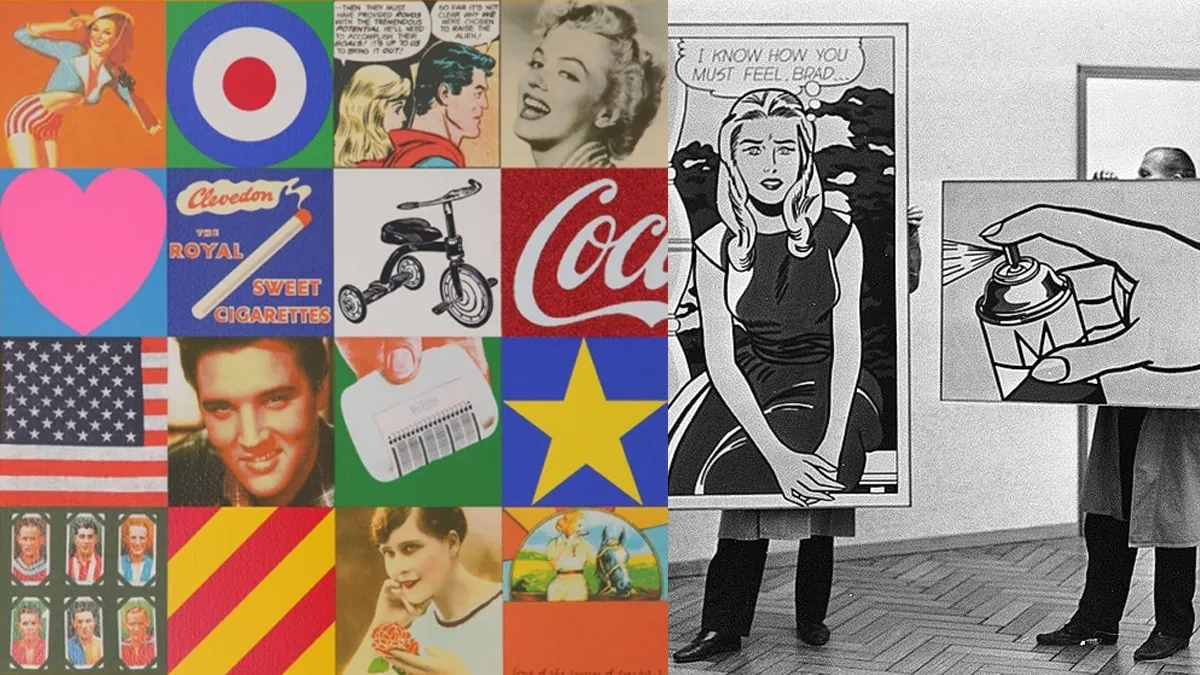
After the transition from Neo-Dada to Pop Art, artists across the world were very keen on using popular culture.
Even though the members of the Independent Group were the first to use the term “Pop art,” American artists were soon emulated by this new style.
While the individual types of Pop artists differ significantly, there are some common elements, themes, and concepts in the Pop Art time period.
Soon after the arrival of American Pop art culture, many mainland variants of the Pop art movement brought forth a wave of change.
Suggested Read: Romanticism Art Period
Eduardo Paolozzi and Richard Hamilton: The Tabular Image

European Pop artists sustained mixed feelings about the popular culture of America.
These feelings are clearly evident in the Pop Art collages of Hamilton and Paolozzi.
This pop art artist simultaneously condemned the excess and inflated the mass-reproduced objects and images.
Some members of the Independent Group, including Hamilton, were among the first few to use mass media imagery in their artworks.
Hamilton carefully combines sourced elements from mass media imagery to convey his notion that American culture was one of excess.
The collage he created in 1956 called, “Just what is it that makes today’s homes so different, so appealing?” conveys it the best.
Through his photo montage collages, like his 1947 work I Was a Rich Man’s Plaything, Paolozzi reveals the mass media’s barrage.
Pulp Culture: Roy Lichtenstein
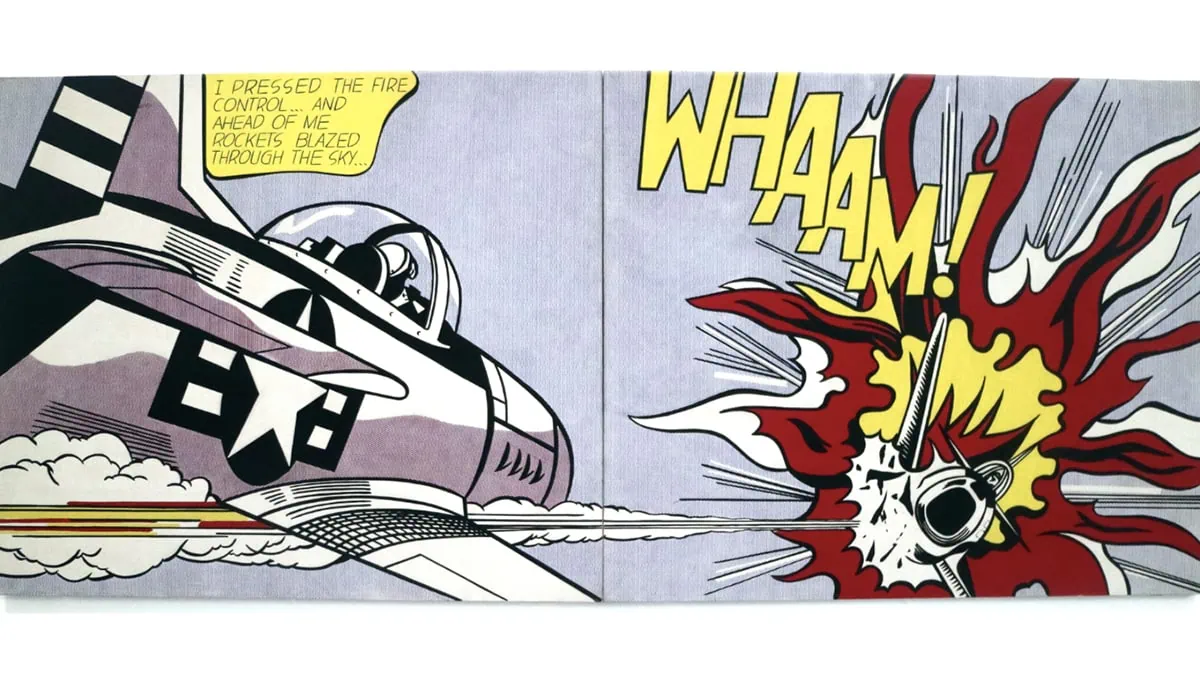
Roy Lichtenstein’s work’s biggest highlight is his ability to create brilliant compositions regardless of using comic books as his subject matter.
Lichtenstein took inspiration from mass-produced picture books and applied the techniques of comic books to his artworks.
Although Roy Lichtenstein uses popular imagery in his paintings his artworks weren’t merely duplicated.
He would always add focus to a single panel from a comic book to creatively reimagine the original composition.
Lichtenstein hand-painted the machine-generated dots and transfigured comic book scenes to blur the distinction between mass reproduction and high art.
The Monumental Image: James Rosenquist
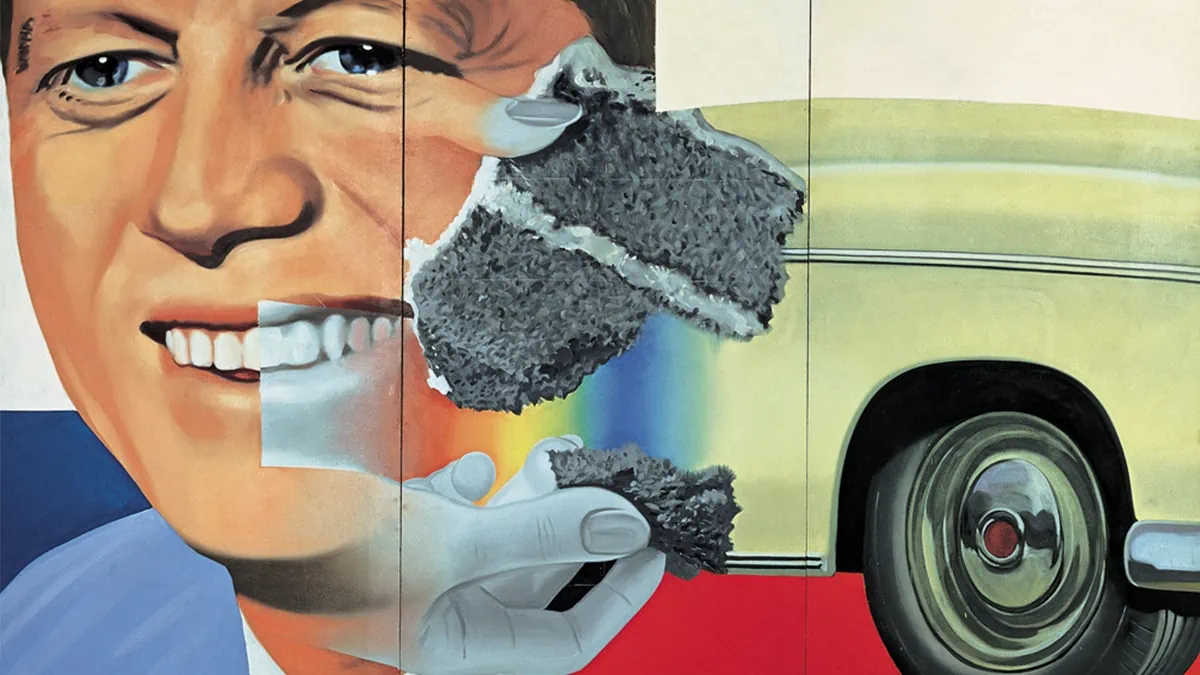
Rosenquist was yet another artist who took inspiration from popular culture images for his paintings.
He generally brought together various celebrities, products, and images in a Surrealist manner.
Rosenquist would use simple, regular-used images to convey impactful, political messages.
He was responsible for transforming mundane images that were used in popular culture into the status of fine art.
By painting billboards, he began his career as an artist. He was able to transition perfectly into executing his collages on monumental scales.
Repetition: Andy Warhol and Repetition
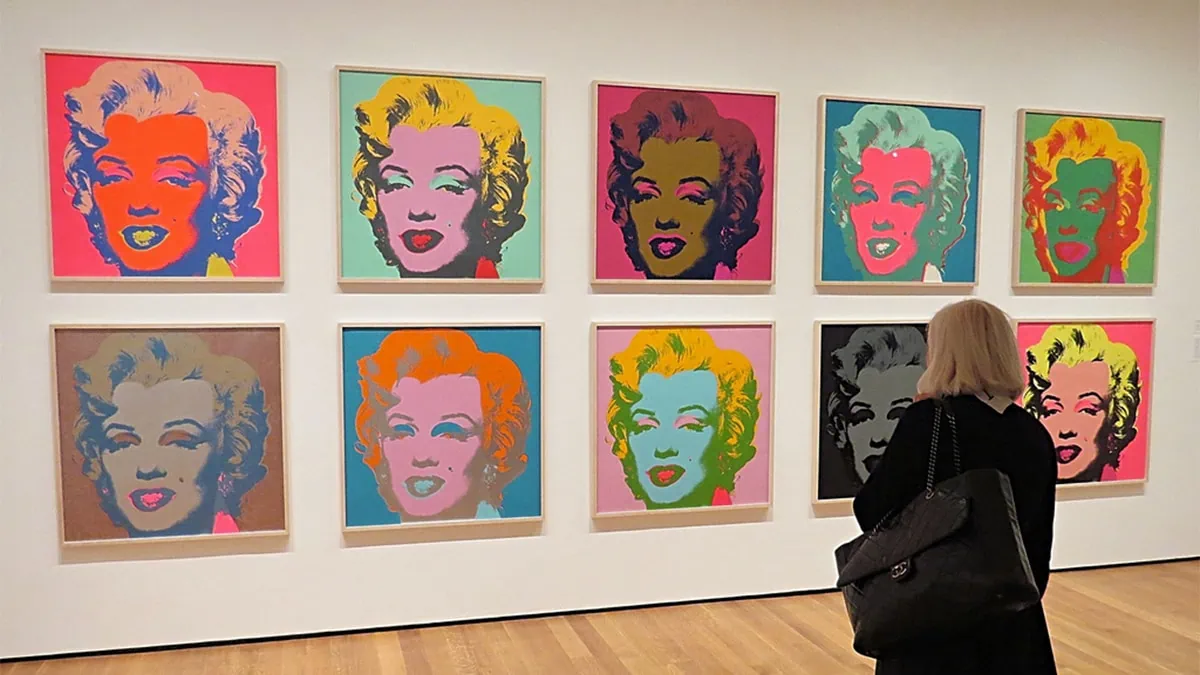
When you think of the Pop Art movement, Andy Warhol is a name that will always be associated with it.
Warhol is one of the most famous Pop artists whose style is exemplary and acclaimed globally, especially for his celebrity portraits. .
The most common theme used in all of his work is the inspiration of mass consumerism and popular culture.
This pop artist, and Marilyn Monroe, a popular figure, used to equate consumer goods as a statement on consumerism.
Many of Warhol’s old works would feature popular images, Coca-Cola bottles, and Campbell’s soup cans.
Later, Warhol began to screenprint his works, which were previously hand-painted to further mimic and parody the overall mass production.
He insisted on creating his works mechanically, rejecting notions of artistic genius and authenticity.
Instead, Warhol highlighted the commodification of art in the modern age by equating paintings with cans of soup.
He told the world how both the soup and the paintings have material worth and can be purchased and sold merely as consumer goods.
Suggested Read: Paintings by Jackson Pollock
Pop Sculpture: Claes Oldenburg

Despite sculptures being regarded as the perfect pop art medium, Cales Olden was one of the few people who genuinely showed interest in it.
Around the 1960s Oldenburg launched an exhibition called “The Store” that sold his small sculptural replicas of mundane objects.
Today, he is well-known for his soft sculptures and massive public replicas of mundane consumerist objects.
He mainly used fabric and stuffing to construct large ice cream cones, cake slices, mixers, and other consumerist items.
His soft sculptures were a commentary on the hollowness of consumerism, as they would collapse in on themselves.
After his soft sculptures, Oldenburg created grand pieces of public art, like his 1974 Clothespin sculpture which was 45 feet high.
The key factor in his artworks was a sense of playfulness toward showcasing the mundane in unconventional ways.
Pop Art in Los Angeles

Although New York City was the birthplace of American Pop Art, Los Angeles had its own variety.
In 1962, the Pasadena Art Museum conducted the first Pop Art survey.
The New Painting of Common Objects exhibition displayed the works of Liechtenstein, Warhol, Joe Goode, Ed Ruscha, Robert Dowd, and Phillip Hefferton.
Other Los Angeles Pop artists, such as Billy Al Bengston, practiced another Pop Art aesthetic.
Most of the works in this aesthetic featured commonplace objects like motorcycles and surfing and used new materials like automobile paint.
Making the familiar unknown was a central theme of Los Angeles Pop Art culture.
Los Angeles pop artists lifted pop art beyond pure replication.
Their goal was to push the boundaries between popular culture and fine art.
French Nouveau Réalisme
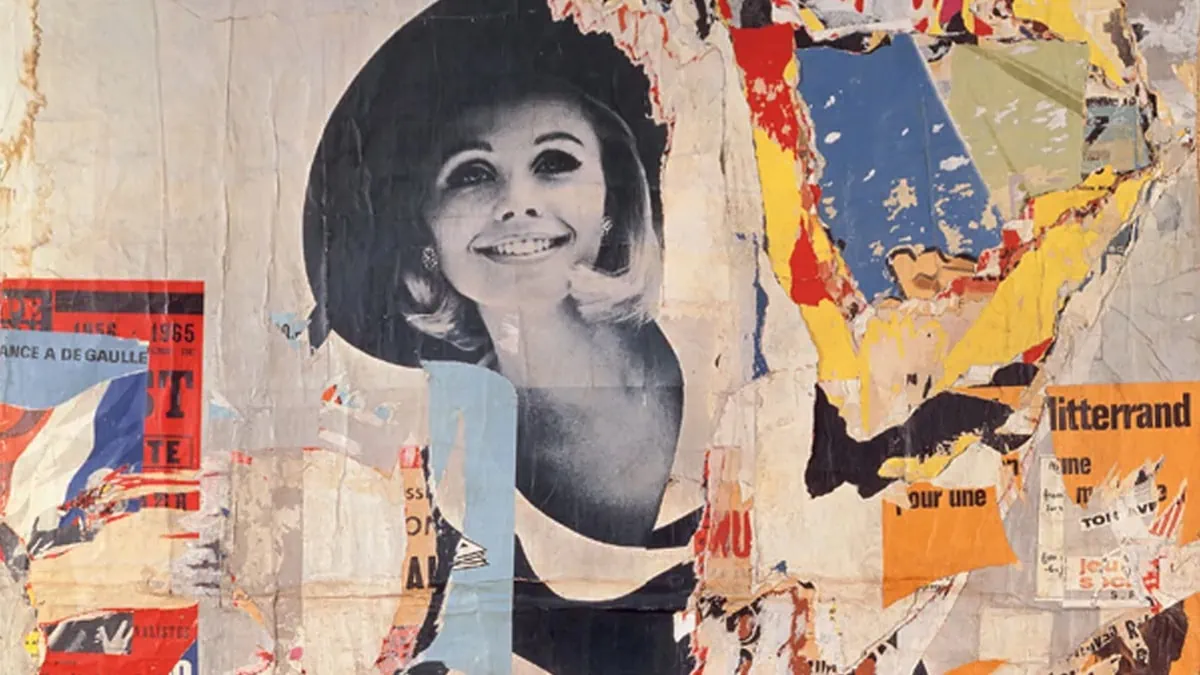
In the year 1960, art critic Pierre Restany founded the Nouveau Réalisme movement with the “Constitutive Declaration of New Realism.”
This declaration claimed that Nouveau Réalisme was a new way of perceiving reality.
Nouveau Realism put forth the principle of poetically recycling the realities of industry, urban life, and advertisement.
The red flags associated with commercial culture were cited in the Nouveau Réalisme movement.
The French Nouveau Realism artists focused on capturing the objects rather than the paintings as a whole.
Pop Art’s Influence on The 21st Century
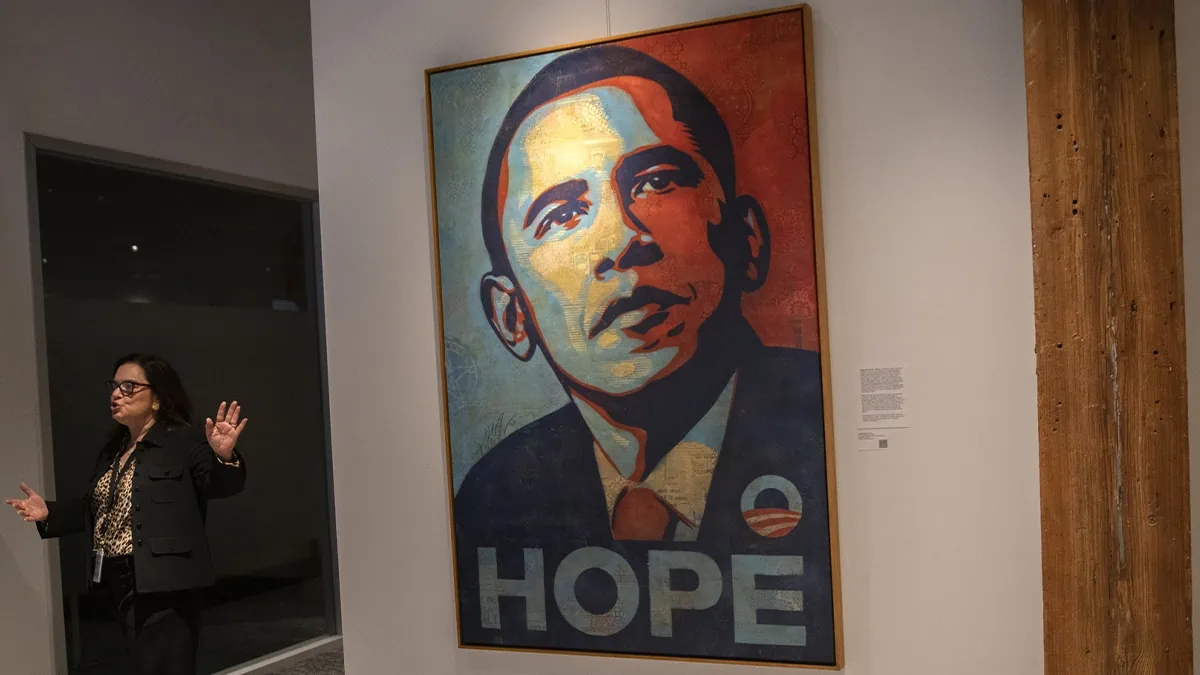
Pop Art artists have managed to build something that is still relevant through different time periods and social structures.
Pop art was one such movement that succeeded in influencing advertising and commercialism as art forms.
The pop art movement inspired the creation of artworks as visual phenomena.
In this movement, images are reduced and the meaning is magnified.
The Pop Art era took a back seat with the introduction of installation and video art in the 1970s.
But irony and social critique in famous pop art fueled so many critical and conceptual works we see today.
Artist Shepard Fairey’s stylized portrait of Barack Obama, which he made for his 2008 presidential campaign is one of the most striking examples of pop art we could trace.
In this stylized portrait of Obama, Fairey took inspiration from various Pop Art aesthetics like art, propaganda, and advertising.
The Pop Art movement not only inspired many artists, such as Fairey but also provided them with an opportunity to advance art!
We Have Reached The End
It was indeed exhilarating and inspiring to see how contemporary artists are re-engaging with Pop Art in the 21st century.
If the Pop Art movement has inspired you, then celebrate it with your favorite Pop Art masterpiece from the era.
What better way to add a pop of color to your home?
Thank you for reading this article about Pop Art Movement all the way to the end.
Please let us know in the comment section below if you know some more interesting facts about the Pop Art movement.
FAQs
Andy Warhol played a prominent role in Pop art and is claimed to be the father of Pop Art.
Everyday items that were expressed by the artists using imagery, mass media, etc. and that delivered the engagement of art with the popular culture was collectively known as pop art. Thus, the movement which initiated the artists to express the same was known as Pop Art Movement.
The New York City (NYC) was the hub of pop art.



